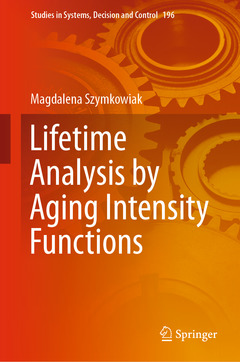Description
Lifetime Analysis by Aging Intensity Functions, 1st ed. 2020
Studies in Systems, Decision and Control Series, Vol. 196
Author: Szymkowiak Magdalena
Language: English
Subject for Lifetime Analysis by Aging Intensity Functions:
105.49 €
In Print (Delivery period: 15 days).
Add to cartPublication date: 08-2020
Support: Print on demand
Publication date: 02-2019
215 p. · 15.5x23.5 cm · Hardback
Description
/li>Contents
/li>Comment
/li>
This book addresses a range of aging intensity functions, which make it possible to measure and compare aging trends for lifetime random variables. Moreover, they can be used for the characterization of lifetime distributions, also with bounded support. Stochastic orders based on the aging intensities, and their connections with some other orders, are also discussed.
To demonstrate the applicability of aging intensity in reliability practice, the book analyzes both real and generated data. The estimated, properly chosen, aging intensity function is mainly recommended to identify data?s lifetime distribution, and secondly, to estimate some of the parameters of the identified distribution. Both reliability researchers and practitioners will find the book a valuable guide and source of inspiration.Defines and studies selected aging intensity functions that are used to gauge various aspects of aging trends
Reviews the research on Lifetime Analysis by Aging Intensity Functions carried out in the past several years
Offers a valuable reference guide for reliability researchers and practitioners alike
Presents a number of basic continuous and discrete, univariate and bivariate lifetime distributions

